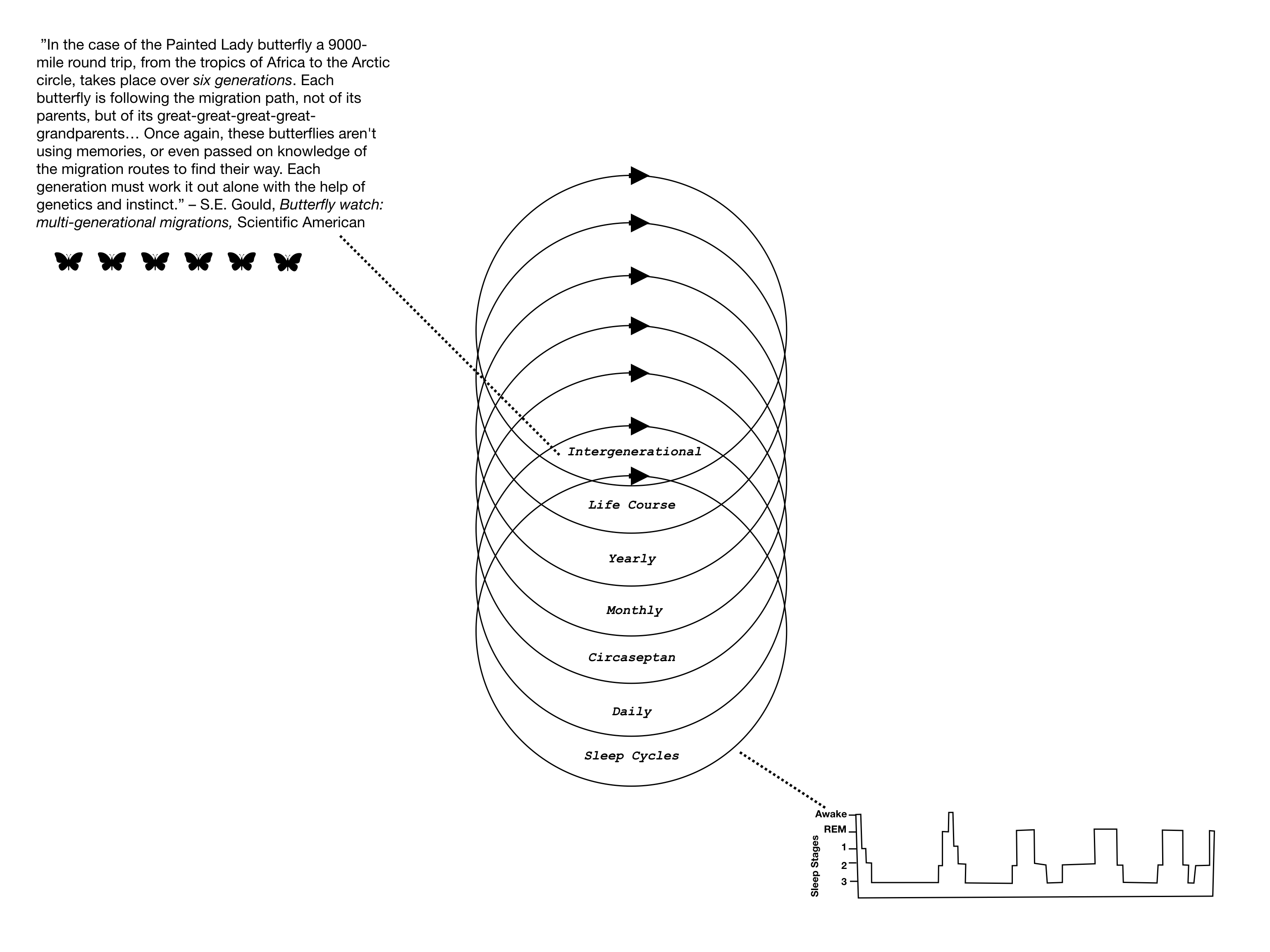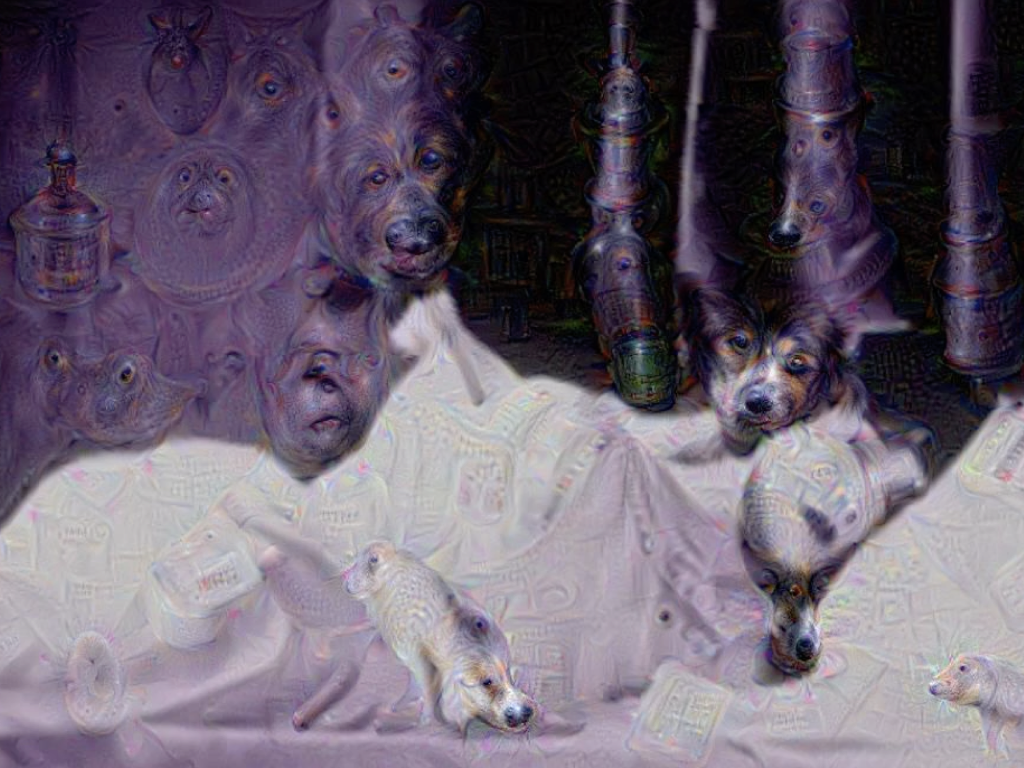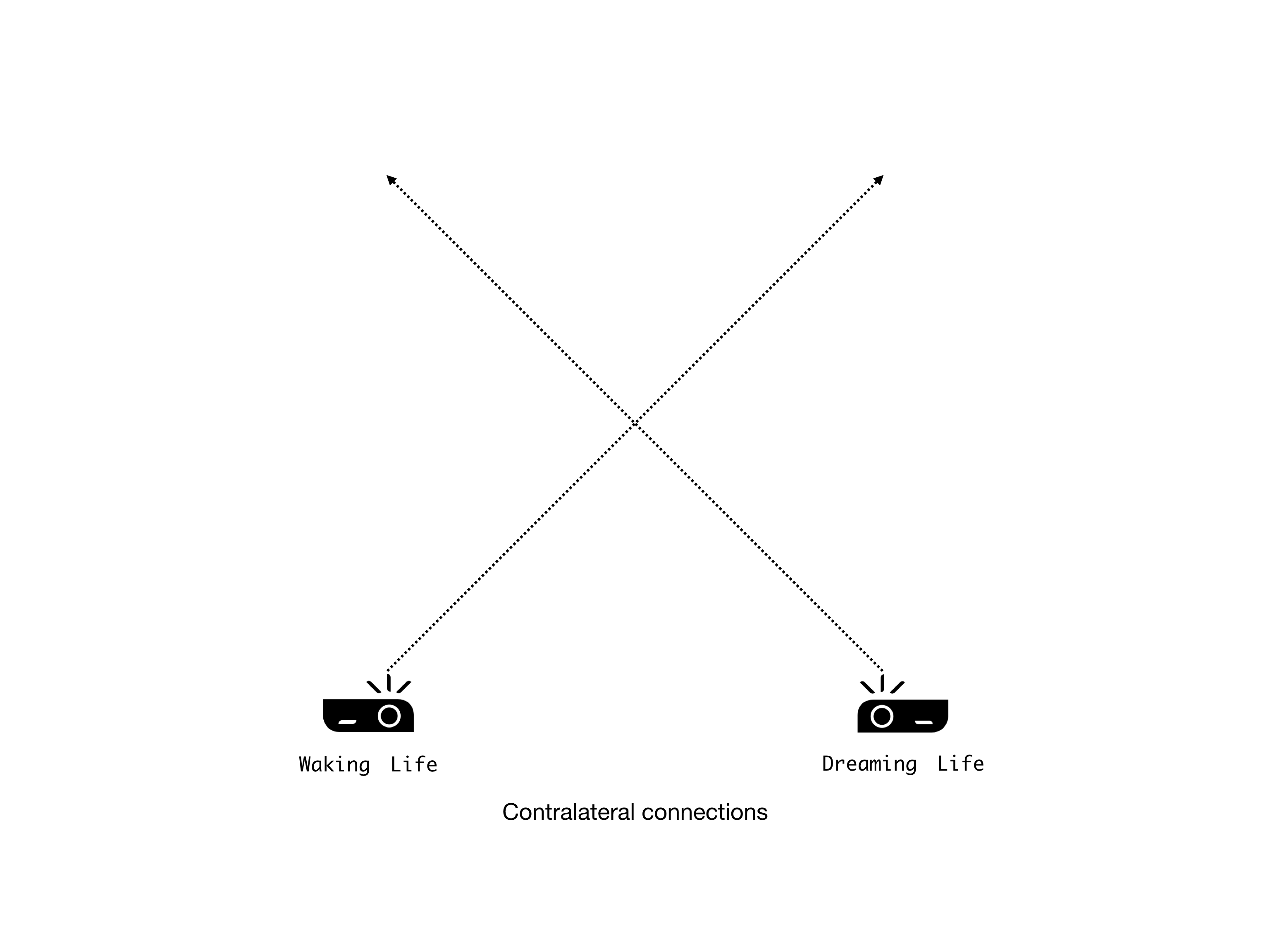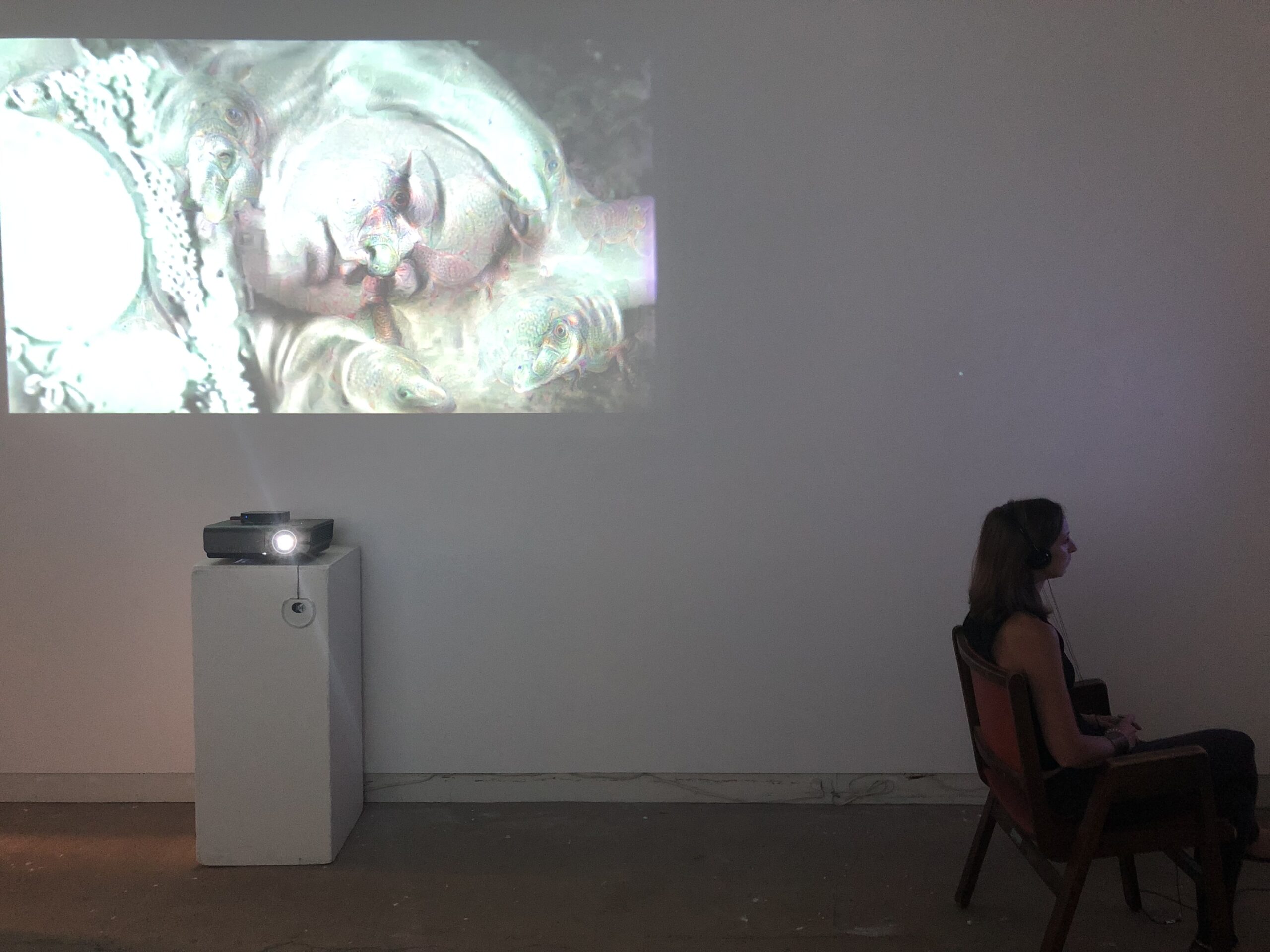
Circaseptan
Year: 2019
Gallery: Modern-Fuel Artist Run Centre
Location: Kingston, Canada
Year: 2019
Gallery: Modern-Fuel Artist Run Centre
Location: Kingston, Canada
How do the events of the day seep into our dreams? Dreams seem to lag behind. Some parts of waking life recur in dreams both immediately after the event and again at an approximately 7-day (circaseptan) delay (Eichenlaub et al., 2018). 7 days of dreams and several dreams per night. What parts of waking life are incorporated into dreams: feelings, phrases, objects? Could there be dream content that has connections to waking life too subtle for us to make the connection? Nielsen and colleagues (2004) argue that this dream-lag is unlikely to be explained by our societal division of weeks into 7 day segments, but is more likely to be based on internal, self-generated rhythms. Circaseptan is an exploration of this curious delay between our waking and dream lives, as well as the layers of other rhythms we are embedded in.
Circaseptan interrogates the recurrence between waking and dreaming. Using found footage of sleep (the outside of a dream) and the same footage deep-dreamed through Alexander Mordvintsev’s deep dream computer vision program (a glimpse into the inside of a digital dream), dreaming and wake visually recombine. The DeepDream program takes a neural network that was trained on classifying images from a large image dataset (e.g., identifying cars or cats) and runs the network in reverse, yielding surreal images over a large number of iterations. In this work, each video frame was deep dreamed and then stitched back together into video.
Circaseptan interrogates the recurrence between waking and dreaming. Using found footage of sleep (the outside of a dream) and the same footage deep-dreamed through Alexander Mordvintsev’s deep dream computer vision program (a glimpse into the inside of a digital dream), dreaming and wake visually recombine. The DeepDream program takes a neural network that was trained on classifying images from a large image dataset (e.g., identifying cars or cats) and runs the network in reverse, yielding surreal images over a large number of iterations. In this work, each video frame was deep dreamed and then stitched back together into video.





